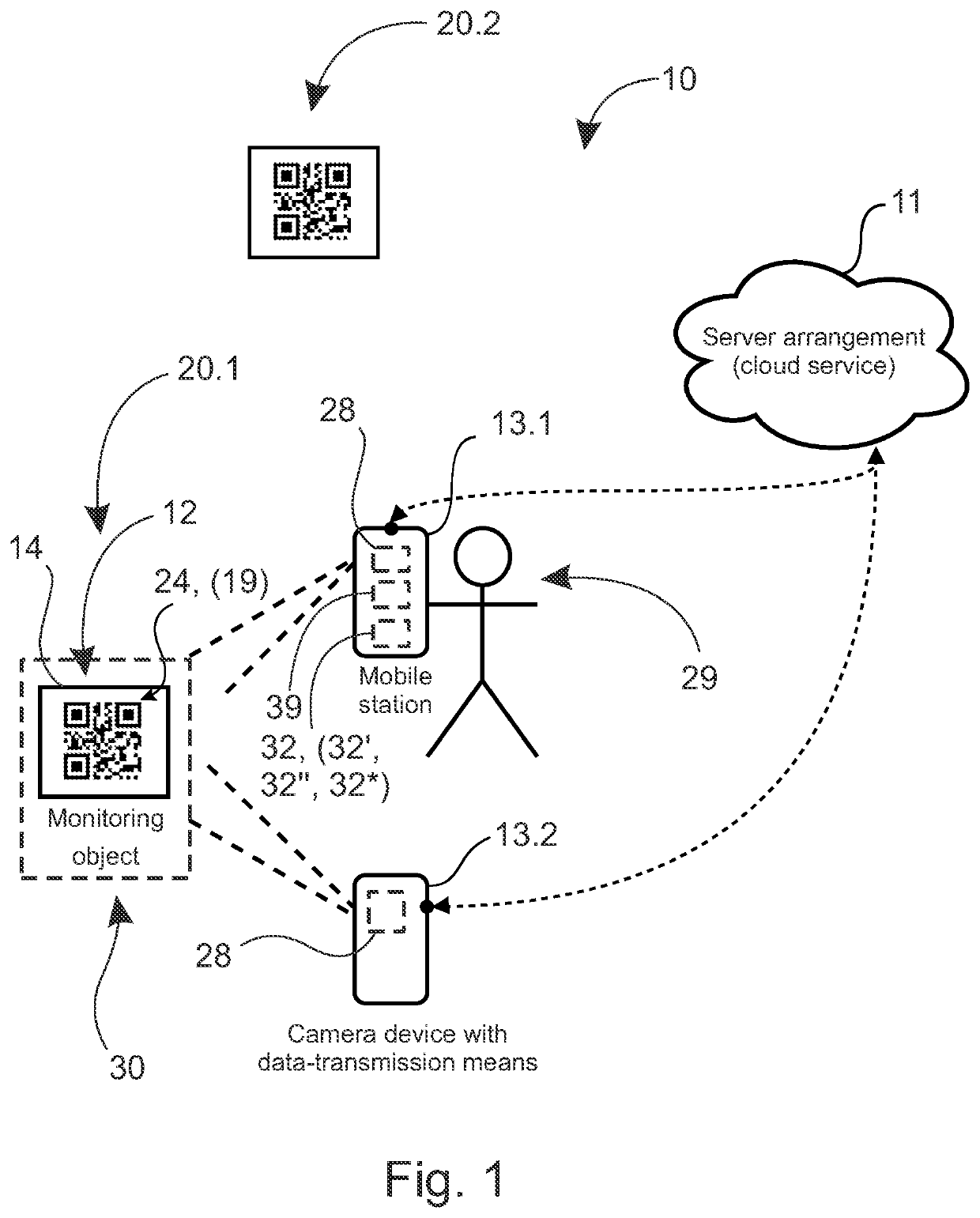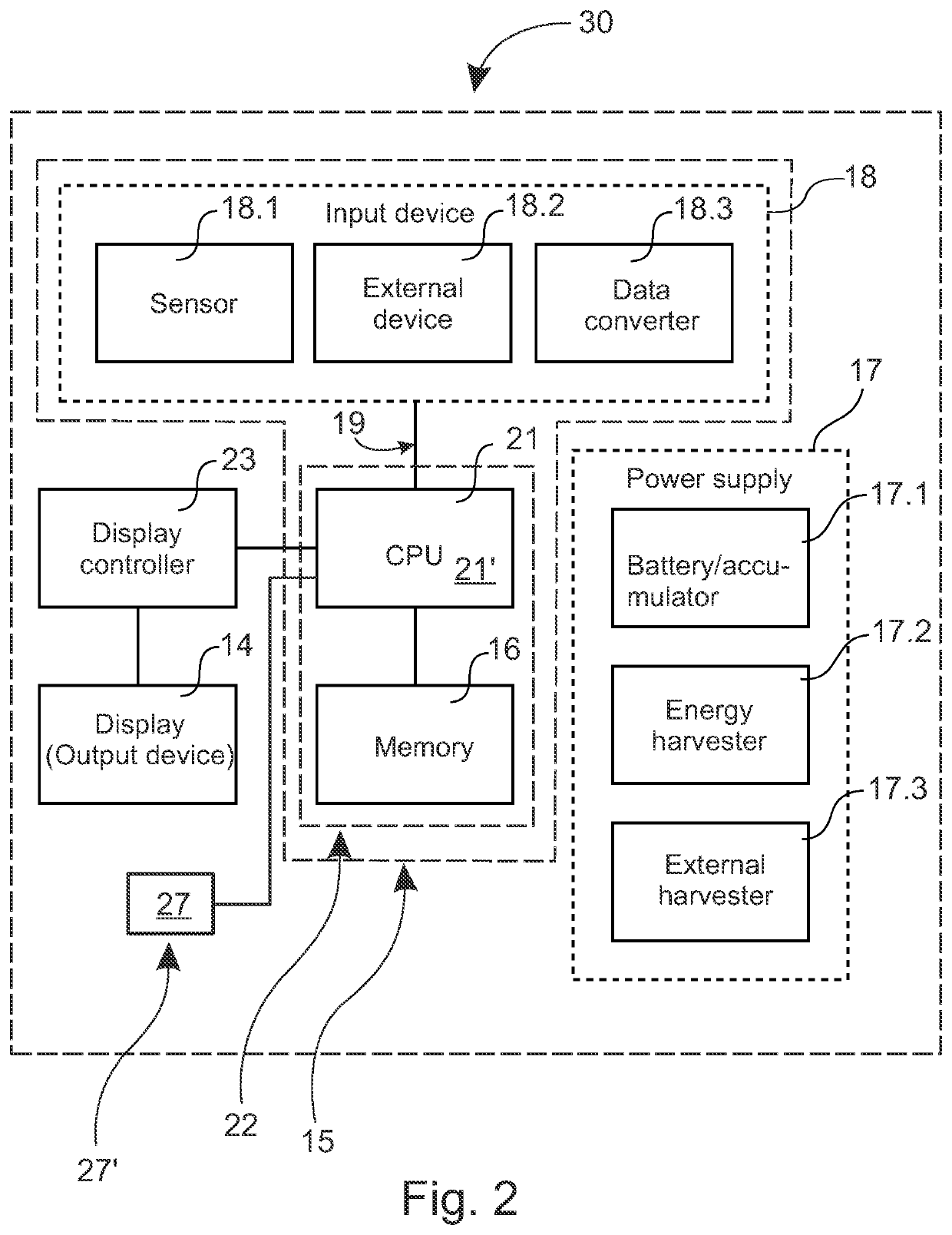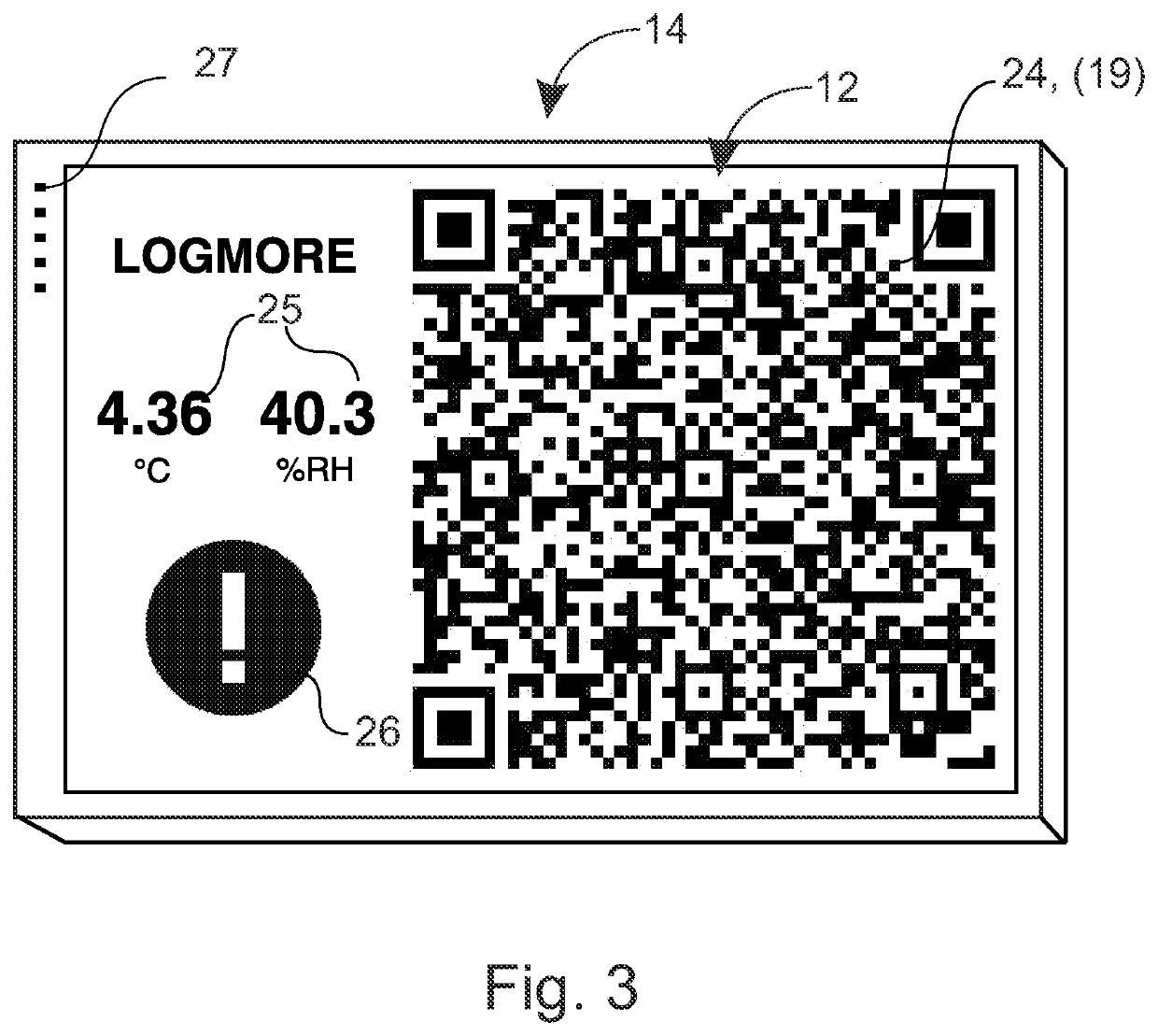Data-transmission system
a data transmission system and data technology, applied in the field of data transmission systems, can solve the problems of difficult logistical applications, poor applicability of the above solutions, and high power consumption, and achieve the effects of improving system usability, saving power, and usability
- Summary
- Abstract
- Description
- Claims
- Application Information
AI Technical Summary
Benefits of technology
Problems solved by technology
Method used
Image
Examples
first embodiment
[0088]Machine-readable code with a low power consumption, which is particularly suitable, for example, for mass products with a relatively short delivery cycle in the logistics chain, can also be created as follows. shown in FIG. 9a, a character display 12′ can be used. It is arranged to show main part, for example, of QR code 24 using, for example, one bit. Embedded in the QR code 24 is, in addition, an area 12″ of at least one data-pixel, which is arranged to show data to be transmitted (for example, has temperature remained / not remained within set limits). Instead of QR code 24, for example, some 2d code according to standard, such as aztec code or similar, can equally be used to the creation of a static area 12′ and the area 12″ containing changing data.
second embodiment
[0089] which is shown in FIG. 9b, most of the QR code 24 shown on the output device 14 is a preprinted pattern 12′″. In addition, there is in the QR code 24, now in its centre, a data area 12″ for data transfer, formed of at least one data-pixel. The preprinted pattern 12′″ can show, for example, most of or entirely the server's address, or other similar unchanging information. The preprinted pattern 12′″ can be read and defined, for example, at the first reading. At the first reading, in addition to the server address or separately, at the second separate reading, read the data-pixels of the QR code 24, which is now in the middle of the data area 12″, in which is at least one pixel. Here or also in the previously presented embodiment, the changing data area 12″ can be implemented, for example, using an LCD display or similar.
[0090]FIG. 11 shows one way to implement the changing data area's 12″ otherwise statically implemented QR code 24. The data area 12″ is now formed using a smal...
PUM
 Login to View More
Login to View More Abstract
Description
Claims
Application Information
 Login to View More
Login to View More - R&D
- Intellectual Property
- Life Sciences
- Materials
- Tech Scout
- Unparalleled Data Quality
- Higher Quality Content
- 60% Fewer Hallucinations
Browse by: Latest US Patents, China's latest patents, Technical Efficacy Thesaurus, Application Domain, Technology Topic, Popular Technical Reports.
© 2025 PatSnap. All rights reserved.Legal|Privacy policy|Modern Slavery Act Transparency Statement|Sitemap|About US| Contact US: help@patsnap.com



